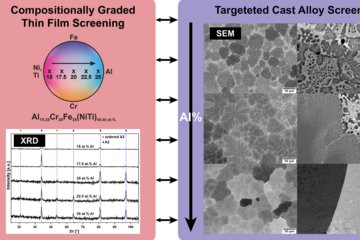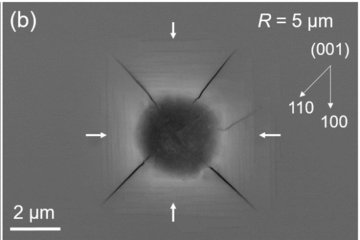All genres
21.
Talk
Scale Bridging Modeling of Hydrogen Embrittlement. 2012 MRS Fall Meeting & Exhibit, Boston, MA, USA (2012)
22.
Talk
Hydrogen in fcc antiferromagnetic FeMn: An ab-initio study. SFB761 annual retreat meeting 2012, Bad Neuenahr, Germany (2012)
23.
Talk
Scale bridging modeling of hydrogen embrittlement. ICAMS Klausurtagung, Münster, Germany (2012)
24.
Talk
Simulations of Grain Boundary Migration via the Nucleation and Growth of Islands. MSE Congress 2012, Darmstadt, Germany (2012)
25.
Talk
Scale bridging modeling of hydrogen embrittlement. DPG Frühjahrstagung 2012, Berlin, Germany (2012)
26.
Talk
Decomposition of cemetite under strain in pearlitic. DPG Frühjahrstagung 2012, Berlin, Germany (2012)
27.
Talk
Simulations of grain boundary migration via the nucleation and growth of islands. DPG Frühjahrstagung 2012, Berlin, Germany (2012)
28.
Talk
Why do co-deformed composites have high strength after phase dissolution? SurMat Seminar 2012, Meschede, Germany (2012)
29.
Talk
Towards an ab-initio based understanding of H-embrittlement: An atomistic study of the HELP mechanism. Joint Hydrogenius and ICNER International Workshop on Hydrogen-Materials Interactions, Kyushu, Japan (2012)
30.
Talk
Understanding H-H interactions in fcc metals. 1st Austrian-german workshop on Computational Materials Design, Kramsach, Austria (2012)
31.
Talk
Hydrogen embrittlement - A scale bridging perspective. 1st Austrian-German workshop on Computational Materials Design, Kramsach, Austria (2012)
32.
Talk
Effect of local stress state on the glide of ½a₀<111> screw dislocation in bcc-Fe. 1st Austrian-German Workshop on Computational Materials Design, Kramsach, Austria (2012)
33.
Talk
Thermodynamics of the strain-induced dissolution of cementite in pearlitic structure steel: An ab-initio study. 1st Austrian-German workshop on Computational Materials Design, Kramsach, Austria (2012)
34.
Talk
Grain boundary migration via the nucleation and growth of islands in molecular dynamics. 1st Austrian-German Workshop on Computational Materials Design, Kramsach, Austria (2012)
35.
Talk
Scale bridging modeling of hydrogen embrittlement. MMM 2012, Singapore City, Singapore (2012)
36.
Talk
Atomistic modeling of the mobility of the ½a0<111> screw dislocation in iron. E-MRS Fall Meeting, Warsaw, Poland (2011)
37.
Talk
Ab initio investigation of hydrogen solubility and mobility in steels: Indentification of hydrogen related mechanisms in steels. Steel Hydrogen Conference, Gent, Belgium (2011)
38.
Talk
Study of iron EAM potentials and their effects on dislocation dynamic. E-MRS Spring Meeting, Nice, France (2011)
39.
Talk
Fully Ab Initio Description of Point Defect Formation and Properties at Extreme Temperatures. MRS 2011 Spring Meeting, San Francisco, CA, USA (2011)
40.
Talk
Effect of H on homogeneous dislocation nucleation: Consequences for hydrogen embrittlement. DPG Frühjahrstagung der Sektion Kondensierte Materie (SKM), Dresden, Germany (2011)











